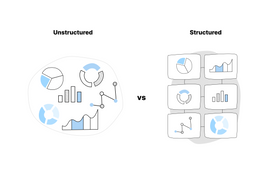5 Steps to Developing a Knowledge Management Strategy
Published July 22, 2022

A knowledge management (KM) strategy is a comprehensive and actionable plan that organizations implement to manage and centralize their institutional knowledge. It aims to significantly improve the organization, employee productivity, and product or service quality.
Knowledge management strategies work best when they align with the organization's overarching goals and strategy.
Importance of a Knowledge Management Strategy
It is estimated that ineffective knowledge sharing costs large US companies $47 million in productivity yearly.
If your team wastes time at work waiting for knowledge from other staff members or having to recreate it because they couldn't access information, it will cost you in terms of project delays and missed opportunities. Furthermore, it can also lead to employee dissatisfaction.
A knowledge management strategy addresses the problem of information silos. This will help boost employee productivity since they will waste less time searching or waiting for information. In turn, it will improve your team's understanding of knowledge management and encourage sharing of best knowledge management practices.
A successful KM strategy can provide a strong business case for innovative solutions that could improve your organization, such as encouraging product or service development.
How to Develop a Knowledge Management Strategy in 5 Steps
1. Establish Your Objectives
To start, outline and document your objectives. By outlining these goals, you can design a roadmap for accomplishing them and ensure your team knows their roles and the expectations that are to be met. This will allow them to work towards similar goals without overlapping or conflicting with one another's efforts.
You can further categorize your goals as either short-term or long-term, depending on how important they are to fulfilling your company's knowledge requirements.
2. Assess Your Current State
There is no template or blueprint for knowledge management since a KM strategy needs to be tailored to your business goals. To make it feasible and successful for your organization, you first need a deep understanding of your current state.
A typical assessment should outline where you are currently, any gaps in the process, and proposals for addressing those gaps.
It must also address the five fundamental components of knowledge management, which are:
People
Don't forget to consider the end user. Adoption will be low if your plan fails to assist users or meet their needs. Determine who they are, what information they need to operate effectively, and how they share knowledge or what prevents them from doing so.
Processes
You will want to look into the current processes within the organization and each business unit. Then you'll have to see whether those are applied and followed. Your analysis should expose the gaps and show how these processes work in real life—whether employees find them efficient or taxing.
Technology
It is vital to be conversant with the systems that are in place, including how they work, who uses them, what their limits are, and where they are in their lifecycle.
Content
Doing a content analysis will help you find gaps, irrelevant content, potential security risks, inefficient processes, and other areas that need to be remedied.
Culture
How employees capture, manage, and share knowledge depends on the company's culture. You might ask, "Is there a culture of knowledge sharing within the organization, or do people hoard knowledge?"
3. Define Your Knowledge Management Strategy
Show how you seek to incorporate KM with the overarching objectives of your organization. There are many parts to an effective knowledge management strategy, such as:
Capture and Organize Information
Organize and categorize information in your internal knowledge base so it is easily accessible. Proper document management can aid in this endeavor.
Distribute and Exchange Knowledge
Standardize how your employees can access and share knowledge with their colleagues. Information that no one can see or access is technically worthless.
Establish a Search-First Mindset
If people don't explore the knowledge base and instead ask repetitive questions, it will discourage others from documenting information since the mindset will be that no one searches for it anyway.
Facilitate Collaboration
It would be a massive undertaking for any organization to achieve its objectives if just a few people contributed to its knowledge base. Therefore, make sure to choose a knowledge management system that promotes cooperation.
Analyze and Identify Gaps
Building internal knowledge is an ongoing process. Therefore, evaluating usage and identifying areas that can be further improved is essential.
4. Identify Technology Needs
It is important to choose up-to-date knowledge management software as part of an effective electronic management system that satisfies the requirements of your organization. Archaic technologies can impede your knowledge management efforts. Check for any preferences within the team and go for one that boosts employee confidence.
Furthermore, check for data center security measures to reduce data integrity risks and protect the company from data breaches.
5. Lay Out Your Action Plan
Lay out how you intend to implement your strategy to help remove ambiguity from the process. This will also give you a clear overview of the resources (such as people, technology, and financing) needed to meet your KM strategy objectives.
With that, it's time to put your approach into action, analyze the results, and make adjustments based on what you've learned.


![Notion Software for Content Management: Advantages and Disadvantages [2023]](https://entail-assets.com/unleash/fit-in/280x280/Notion_Software_for_Content_Management__Advantages_and_Disadvantages_2023-1672141699182.png)
